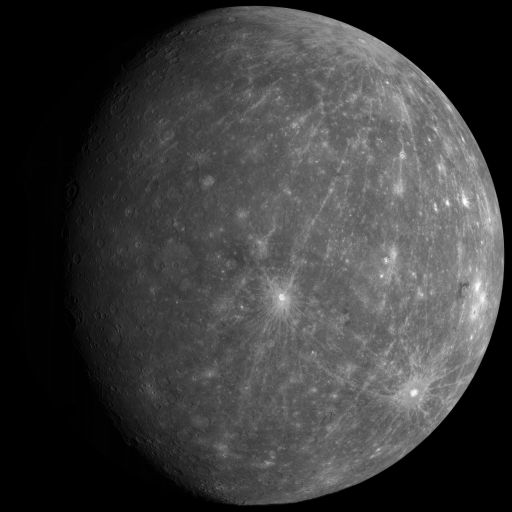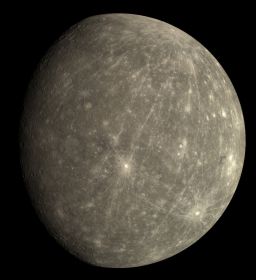Emily Lakdawalla • Oct 05, 2009
Massive MESSENGER Mercury Mosaic
Just in time for MESSENGER's third flyby comes a mosaic from the second flyby! This absolutely enormous mosaic of Mercury's globe represents 66 individual narrow-angle camera frames on Mercury captured by MESSENGER as it departed from its second encounter. Its departure view on its recent, third flyby would have been basically the same if it had not been in safe mode. The mosaic was assembled by Cassini imaging team member Jason Perry in his free time, and I hereby thank him for the four days of effort that it took him to establish a control network that would make his software behave and assemble this gorgeous view. I'm glad he could do it because it was way beyond my expertise! Now does anybody else want to dive into the Planetary Data System for the color data taken using the wide-angle camera during departure so we can produce a nice color version of this view? There was a 3-by-3 WAC color mosaic at about the same time...

NASA / JHUAPL / CIW / mosaic by Jason Perry
Massive MESSENGER Mercury Mosaic
This was MESSENGER's departing view of Mercury during its second flyby in October of 2008. Most of the terrain to the right of Kuiper, the bright ray crater near the center of the image, was not seen by spacecraft prior to the MESSENGER encounter. The image is a mosaic of 66 individual narrow-angle camera frames and has a resolution of 1.2 kilometers per pixel at the center of the mosaic. To build the mosaic, Jason Perry reprojected all the images to a common perspective; the view is an orthographic projection centered at 2 degrees South latitude, 322 degrees East longitude. The reprojection explains why Mercury's limb appears unnaturally sharp. This version is at 50 percent of the original resolution; visit Jason Perry's blog for the full-resolution version in PNG format.
NASA / JPL / CIW
Mercury
MESSENGER took this approximate true-color photo of Mercury using its wide-angle camera as it departed from its October 6, 2008 flyby of Mercury. About half of the illuminated area -- the right (east) side of this image -- had not before been seen by spacecraft. The bright splash just below center is the fresh crater Kuiper. Another fresh crater near the north pole (top right) has produced an enormous system of rays that stretches nearly around the planet, converging toward the south pole.Support our core enterprises
Your support powers our mission to explore worlds, find life, and defend Earth. You make all the difference when you make a gift. Give today!
Donate

 Explore Worlds
Explore Worlds Find Life
Find Life Defend Earth
Defend Earth

